 April 4, 2019 John E. Ross, KD8IDJ, Editor
| ||||||
Department of Defense to Transmit Interoperability Exercise Info via WWV/WWVH The US Department of Defense (DOD) plans to start making use of a provisional time slot on WWV and WWVH to announce upcoming HF military communication exercises and how the Amateur Radio community can become involved in them. The announcements will occur at 10 minutes past on WWV and at 50 minutes past on WWVH. WWV and WWVH transmit on 2.5, 5, 10, 15, and 20 MHz.
The initial announcements are set for the period from April 20 - May 3, which coincides with the "Vital Connection" interoperability exercise to be held in Wisconsin. Future time slots will coincide with the Vital Connection exercise Ohio in June; DOD COMEX 19-3 in August, and the DOD COMEX 19-4 in October. Following the proof of concept this year, DOD anticipates making use of the WWV/WWVH broadcast time slot full-time, year-round. At the outset, broadcast messages will likely be static. For future exercises, announcements could be updated throughout an exercise. The messages will direct listeners to a specified website to provide reception reports and feedback. The reception report will also ask the listener to submit a survey that will be shared among DOD, MARS, and WWV/WWVH personnel. English said that the survey will ask listeners questions about how often they listen to WWV/WWVH signals, how they use them, and what types of messages they would like to hear, but he notes that the survey is still under development. "We want to provide feedback to WWV/WWVH to improve situational awareness of who is using their service and how it's being used, as well as future considerations," English said. Petition for Rule Making Calls for "Amateur Digital Mode Transparency" The FCC is accepting comments on a Petition for Rule Making (RM-11831) seeking to amend FCC Part 97 rules that require all ham radio digital transmissions to use techniques "whose technical characteristics have been documented publicly." The Petition, filed by Ron Kolarik, K0IDT, of Lincoln, Nebraska, expresses concerns that some currently used digital modes are not readily and freely able to be decoded, and it asks the FCC to require all digital codes to use protocols that "can be monitored in [their] entirety by third parties with freely available, open-source software," per §97.113(a)(4).
In his Petition, Kolarik maintains that interference from ACDS continues to be "a major problem on the amateur bands." He suggested that an absence of formal complaints may be due to the fact that such stations are "difficult to identify." The Petition also proposes to amend §97.309(a)(4) to ease monitoring of certain digital transmissions. "Without open, over-the-air interception capability for all transmissions in the Amateur Radio spectrum, there is no way to determine if there is commercial or other prohibited, inappropriate content in ongoing communications..." Kolarik's Petition asserts. He said problems arise when "protocols and devices used in commercial, government, and marine services are used in the Amateur Service with no adequate means to fully decode transmissions," thwarting any efforts at self-policing of such transmissions. He said simplifying the language "would remove ambiguity about what constitutes 'publicly documented technical characteristics' by requiring any protocol to be freely decodable," and lead to "amateur digital mode transparency, present and future." Read more. Additional Amateur Radio-Related Petitions Open for Comment The FCC has also placed three other Amateur Radio-related Petitions for Rule Making (PRMs) on public notice and has invited comments. Jerry Oxendine, K4KWH, of Gastonia, North Carolina, wants the FCC to clarify that state and localities should have no authority to regulate Amateur Radio with respect to enacting "distracted driving" statutes. In his Petition for Rule Making, now designated as RM-11833, Oxendine contends that such statutes violate FCC rules on scope and operation of equipment by licensees; violate the intent of the FCC and Congress with respect to Amateur Radio's role in disasters, and hinder emergency operations using mobile equipment. "There is no evidence that the operation of two-way radio has but an insignificant impact on 'distracted driving,'" Oxendine stated. Such distracted driving statutes usurp the authority of the FCC to regulate Amateur Radio, as well as Citizens Band and Part 90 Land Mobile Service users, Oxendine said in his Petition. Edward C. Borghi, KB2E, of Farmington, New York, has submitted a Petition, now designated as RM-11834, that would prohibit applicants from requesting a vanity call sign outside their call sign district. Exceptions would be made for call signs applied for under rules governing call signs previously held by family members. "I see no reason for a licensee to have to compete with out-of-area people for the few 1 à 2 or 2 à 1 or catchy 2 à 3 call signs available in their area of residence," Borghi told the FCC. Jeffrey Bail, NT1K, of West Springfield, Massachusetts, has submitted a very similar Petition, now designated as RM-11835, asking that the FCC give residential preference in competing applications to applicants whose listed FCC address is within the same district/region as the applied call sign. He cites limited availability and increased demand for 1 à 2 and 2 à 1 call signs. Read more. So Now What? "Covering the Rules on Calling CQ" is the focus of the new (April 4) episode of the "So Now What?" podcast for Amateur Radio newcomers. If you're a newly licensed Amateur Radio operator, chances are you have lots of questions. This biweekly podcast has answers! "So Now What?" offers insights from those who've been just where you are now. New episodes will be posted every other Thursday, alternating new-episode weeks with the "ARRL The Doctor is In" podcast.
ARRL Communications Content Producer Michelle Patnode, W3MVP, and ARRL Station Manager Joe Carcia, NJ1Q, co-host the podcast. Presented as a lively conversation, with Patnode representing newer hams and Carcia the veteran operators, the podcast will explore questions that newer hams may have and the issues that keep participants from staying active in the hobby. Some episodes will feature guests to answer questions on specific topic areas. Listeners can find "So Now What?" on Apple iTunes, Blubrry, Stitcher (free registration required, or browse the site as a guest) and through the free Stitcher app for iOS, Kindle, or Android devices. Episodes will be archived on the ARRL website. ARRL Representatives to Attend Annual National Association of Broadcasters (NAB) Convention ARRL will be well represented at the annual National Association of Broadcasters (NAB) Convention, April 6 - 11, in Las Vegas. ARRL CEO Howard Michel, WB2ITX, and Communications Content Producer (and co-host of ARRL's new podcast, "So Now What?") Michelle Patnode, W3MVP, will be attending. Nevada Section ARRL volunteers, under the guidance of Section Manager John Bigley, N7UR, will be on hand to greet visitors at the ARRL booth (#LN1).
The NAB show also features the Amateur Radio Operators Reception, co-sponsored by Turner Engineering, Inc., and Nemal Electronics, Wednesday, April 10, 6 - 8 PM at the Westgate Las Vegas Resort and Casino. The event offers a relaxed evening of discussing broadcasting-related matters, camaraderie, and prizes (including ARRL publications). Comet Named after Hawaiian Radio Amateur Heather Flewelling, WH6FTQ, recently had the honor of lending her name to a newly spotted comet. A planetary defense researcher, Flewelling is a relatively new ham who upgraded to Amateur Extra class at ARRL Field Day 2018. She was working on an asteroid impact early warning system being developed by the University of Hawaii's Institute for Astronomy, funded by NASA, when she saw the comet. The International Astronomical Union (IAU) Minor Planet Center designated Comet Flewelling (Comet 2019 D1) on March 21. "I'm a new ham (not yet a year)," Flewelling told ARRL. "I never knew it would be such a fun and exciting year for me!" Flewelling just began working in a small group, called the Asteroid Terrestrial-Impact Last Alert System (ATLAS). Its two 0.5-meter telescopes are dedicated to surveying the sky and finding near-Earth asteroids. "We occasionally find comets, and, in certain circumstances, you can get Flewelling is quite active on VHF/UHF, and she enjoys hiking and Summits on the Air activations. "I've helped out multiple times for SKYWARN activations, and I'm one of the net controls for the daily net on the local repeaters here. I'm starting to get my station together for HF, but it's tricky, and I'm cheap, and I desperately want whatever I do to be the cheapest, weirdest, why-would-you-do-that solution," she said. One of her greatest accomplishments is working with her team to create the Pan-STARRS1 astronomical database, the world's largest. Flewelling's background is in physics, and she holds a PhD in that discipline from the University of Michigan. "Ham radio is a hobby I should have gotten into years ago," she said on her QRZ.com profile. "As a kid, I would build crazy antennas at my mom's house, in order to pick up 'far away' FM broadcast stations and TV stations. I don't think I heard about ham radio until I was an adult, and then a combination of either lack of time or lack of money prevented me from getting into the hobby." She said an inexpensive SDR she purchased on the internet and the availability of "cheap" radios is what finally got her into Amateur Radio. The K7RA Solar Update Tad Cook, K7RA, Seattle, reports: Sunspots have been coming and going lately, and this week they returned. No sunspots were seen January 31 - March 4, March 13 - 17, or March 25 - 30. They returned on March 31 and have been visible every day since. The average daily sunspot number declined from 16 to 9.4 over the reporting week. Average daily solar flux dropped from 75.2 to 69.5. Average daily planetary A index rose from 3.7 to 8.4, while average middle latitude A index went from 3.9 to 7.3.
Predicted planetary A index is 12, 10, 10, 12, and 8 on April 4 - 8; 5 on April 9 - 11; 15 and 8 on April 12 - 13; 5 on April 14 - 23; 10, 8, 5, 8, 10, and 8 on April 24 - 29; 10 on April 30 - May 1; 8 on May 2 - 3; 10 on May 4; 5 on May 5 - 8; 15 and 8 on May 9 - 10, and 5 on May 11 - 18. Sunspot numbers for March 28 - April 3 were 0, 0, 0, 14, 17, 18, and 17, with a mean of 16. The 10.7-centimeter flux was 68.4, 68.8, 69.4, 69.5, 69.3, 70.8, and 70.6, with a mean of 75.2. Estimated planetary A indices were 11, 7, 4, 11, 8, 6, and 12, with a mean of 3.7. Middle latitude A index was 10, 6, 3, 9, 6, 5, and 12, with a mean of 3.9. A comprehensive K7RA Solar Update is posted Fridays on the ARRL website. For more information concerning radio propagation, visit the ARRL Technical Information Service, read "What the Numbers Mean...," and check out K9LA's Propagation Page. A propagation bulletin archive is available. Monthly charts offer propagation projections between the US and a dozen DX locations. Share your reports and observations. Just Ahead in Radiosport
See the ARRL Contest Calendar for more information. For in-depth reporting on Amateur Radio contesting, subscribe to The ARRL Contest Update via your ARRL member profile email preferences. Amateur Radio Sessions Set for 2019 National Hurricane Conference Amateur Radio will again be represented at the 2019 National Hurricane Conference, April 22 - 25 in New Orleans. "Improving Hurricane Preparedness" is the traditional conference theme. A series of free Amateur Radio sessions will take place on Tuesday, April 23, getting under way at 10:30 AM and continuing until 5 PM. Presenters will offer an overview of their respective organizations and discuss actions during significant hurricanes of 2017 and 2018.
In the second session, NHC Assistant Amateur Radio Coordinator Julio Ripoll, WD4R, will discuss operations of the Center's WX4NHC. Hurricane Watch Net (HWN) Manager Bobby Graves, KB5HAV, will be on hand to explain how the HWN functions in hurricane response situations. He'll also talk about personal weather stations and back-up power. ARRL Eastern Massachusetts Section Emergency Coordinator Rob Macedo, KD1CY, will talk about the VoIP Hurricane Net and best practices in SKYWARN for tropical systems. National Salvation Army Team Emergency Radio Network (SATERN) Liaison Bill Feist, WB8BZH, will describe SATERN and its health-and-welfare role in hurricanes. Plans call for all Amateur Radio recording and live-streaming all presentations via YouTube. Visit www.nsradio.org/stream or on the VoIPWX Net website for details. Read more. Frequency Measuring Test Success Does Not Require Sophisticated Equipment On April 12, ARRL will conduct its next Frequency Measuring Test (FMT), a tradition that dates back to 1931. In that era, prospective participants were promised "a pleasant and profitable experience" and advised that taking part in the FMT would be a form of insurance against out-of-band operation "and the unpleasant consequences that follow." Official Observers and Official Relay Stations were required to participate in the FMT or offer a very good excuse. W1MK -- the predecessor to W1AW -- was one of a dozen or so transmitting stations. The 80- and 40-meter frequencies were confirmed through an arrangement with the US Department of Commerce Radio Division. Accurate frequency measurement -- at least to the degree that radio amateurs rarely worry about operating outside of an amateur allocation -- is now almost a given. But today's FMT leaders are able to accurately measure beyond the number of decimal places (out to five) a typical transceiver will display. FMT announcements may conjure FMTs take place in April and November. The November 2018 FMT results are available on the ARRL website. Tom Wilheit, WX4TW, one of those measuring the 80- and 40-meter frequencies of transmitting station K5CM on November 8 to within 1 Hz or less, reported using an Elecraft KX3 transceiver and Spectrum Lab audio spectrum analysis software. Others applied a similar approach. James Keeth, AF9A, reported using an "openHPSDR Mercury receiver, a 10 MHz OCXO reference calibrated against CHU and WWV, and WSJT-X frequency mode for measurements." Jim Michener, K9JM, depended on his Elecraft K3 and tuning forks to get within 1 Hz of the mark on both bands. Grady Harper, AJ4YA, got extremely close by zero-beating the signal on his K3 and adjusting the measured frequency "to correct for errors in [his] tuner." "This is my first try with this type of adjustment," Harper said. "The fractional part of the Hz is based on length of time between beats. I guessed at this part." Connie Marshall, K5CM, offers information on his website on how to measure the frequency of a carrier. Articles in QST have also covered this topic. The April 2019 FMT will get under way at 0200 - 0225 UTC on April 12. The 40-meter frequency will be in the vicinity of 7065 kHz, and the 80-meter frequency will be in the vicinity of 3599 kHz. Details are on page 94 of the April 2019 issue of QST. Bud Hippisley, W2RU, is New ARRL Public Service Enhancement Working Group Chair ARRL Roanoke Division Director George "Bud" Hippisley, W2RU, is the new chairman of the ARRL Board's Public Service Enhancement Working Group (PSEWG). He succeeds Great Lakes Division Director Dale Williams, WA8EFK, who stepped away as PSEWG chair after being named to lead the ARRL Programs and Services Committee, to which the PSEWG reports. Hippisley thanked Williams for his work in leading the PSEWG since its inception more than 3 years ago.
With the completion of several major tasks, including establishment of the ARES® Plan, a standard set of principles and guidelines for emergency preparedness volunteers, and the launch of the ARES Connect volunteer database management program, two original PSEWG members have stepped down. Joining the PSEWG is Northwestern Division Vice Director Mark Tharp, KB7HDX, who assumes the seat held by Pacific Division Director James Tiemstra, K6JAT, who has been appointed to the ARRL Executive Committee. Another original PSEWG member, past Northwestern Division Director Jim Pace, K7CEX, opted not to run for re-election this past year and has retired from the group. Continuing on the PSEWG are ARRL Headquarters staff members Emergency Preparedness Assistant Ken Bailey, K1FUG; Field Organization Team Supervisor Steve Ewald, WV1X, and Communications Manager David Isgur, N1RSN. Outgoing Chair Williams and Incoming Chair Hippisley both expressed appreciation for extensive ongoing support provided to the working group by ARRL Headquarters' staffers. Issues the PSEWG is expected to tackle in the months ahead include developing a system for collaboration between ARES and the National Traffic System (NTS); updating the ARRL EC-001 and EC-016 courses; rolling out an ARES Task Book Review, and updating the ARRL Ham Aid Deployment Policy. Read more. In Brief...
â¦â¦â¦
â¦â¦â¦
Upcoming ARRL Section, State, and Division Conventions
Find conventions and hamfests in your area. See the ARRL Contest Calendar for more information. For in-depth reporting on Amateur Radio contesting, subscribe to The ARRL Contest Update via your ARRL member profile email preferences.
. .
Subscribe to...
Free of charge to ARRL members...
| ||||||
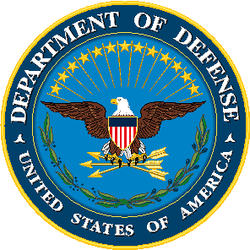 "DOD's use of the broadcast time slot on WWV/WWVH will benefit the MARS program's mission of outreach to the Amateur Radio community," said US Army Military Auxiliary Radio System (MARS) Program Manager Paul English, WD8DBY. "The actual messages to be broadcast are coordinated by the DOD Headquarters that the MARS program supports."
"DOD's use of the broadcast time slot on WWV/WWVH will benefit the MARS program's mission of outreach to the Amateur Radio community," said US Army Military Auxiliary Radio System (MARS) Program Manager Paul English, WD8DBY. "The actual messages to be broadcast are coordinated by the DOD Headquarters that the MARS program supports." Kolarik said his petition also aims to reduce levels of amateur-to-amateur interference from Automated Controlled Digital Stations (ACDS) on HF operating under §97.221(c)(2). Kolarik wants the FCC to delete §97.221(c), which permits automatic control of digital emissions provided the station "is responding to interrogation by a station under local or remote control, and [n]o transmission from the automatically controlled station occupies a bandwidth of more than 500 Hz." The petition does not call for eliminating ACDS, however. Under current rules, ACDS are allowed in specific sub-bands.
Kolarik said his petition also aims to reduce levels of amateur-to-amateur interference from Automated Controlled Digital Stations (ACDS) on HF operating under §97.221(c)(2). Kolarik wants the FCC to delete §97.221(c), which permits automatic control of digital emissions provided the station "is responding to interrogation by a station under local or remote control, and [n]o transmission from the automatically controlled station occupies a bandwidth of more than 500 Hz." The petition does not call for eliminating ACDS, however. Under current rules, ACDS are allowed in specific sub-bands.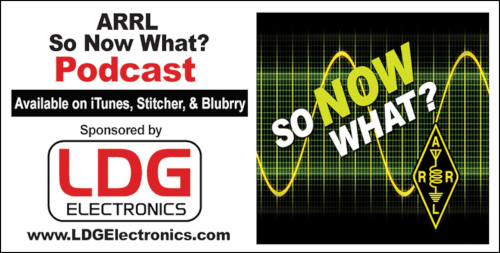 "So Now What?" is sponsored by
"So Now What?" is sponsored by 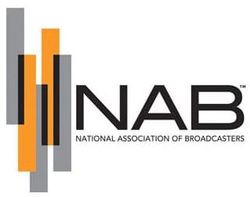 Those tending the ARRL exhibit will offer information on how to get involved in ham radio, become an ARRL member, and take advantage of ARRL services. They'll also offer information on licensing, operating activities, and other topics. The NAB show draws hundreds of hams involved with media, technology, and entertainment, and features nearly 1,700 exhibitors and numerous workshops and classes.
Those tending the ARRL exhibit will offer information on how to get involved in ham radio, become an ARRL member, and take advantage of ARRL services. They'll also offer information on licensing, operating activities, and other topics. The NAB show draws hundreds of hams involved with media, technology, and entertainment, and features nearly 1,700 exhibitors and numerous workshops and classes.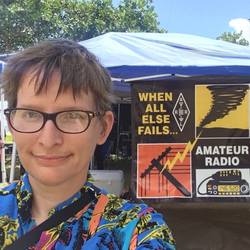 one named after you. You have to be first to report it, and it needs to be a new, unknown comet," she explained.
one named after you. You have to be first to report it, and it needs to be a new, unknown comet," she explained.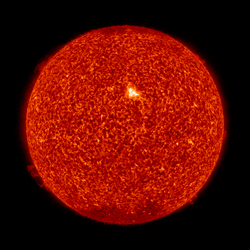 Predicted solar flux is 70 on April 4 - 6; 72 on April 7 - 10; 70, 69, and 69 on April 11 - 13; 70 on April 14 - 22; 69, 68, 69, and 69 on April 23 - 26; 70 on April 27 - May 7; 69 on May 8 - 10, and 70 on May 11 - 18.
Predicted solar flux is 70 on April 4 - 6; 72 on April 7 - 10; 70, 69, and 69 on April 11 - 13; 70 on April 14 - 22; 69, 68, 69, and 69 on April 23 - 26; 70 on April 27 - May 7; 69 on May 8 - 10, and 70 on May 11 - 18.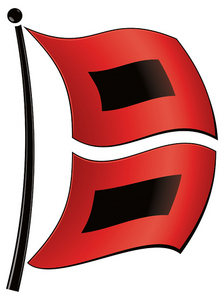 National Hurricane Center (
National Hurricane Center (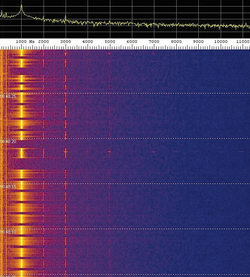 visions of a vast array of sophisticated laboratory equipment. While some of the most successful stations did have laboratory-grade gear, others got quite close with far less.
visions of a vast array of sophisticated laboratory equipment. While some of the most successful stations did have laboratory-grade gear, others got quite close with far less.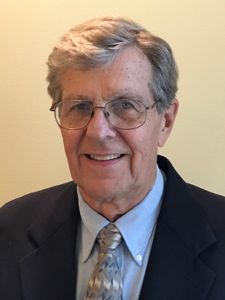 "I am grateful for the foundation that Dale and his team have established for us to build upon in the months ahead," Hippisley said.
"I am grateful for the foundation that Dale and his team have established for us to build upon in the months ahead," Hippisley said..jpg) Robert B. "Bob" Famiglio, K3RF, of Media, Pennsylvania, is once again the ARRL Atlantic Division Vice Director. Famiglio, an attorney, was appointed by ARRL President Rick Roderick, K5UR, to fill the vacancy left by the departure of Riley Hollingsworth, K4ZDH. He will serve with Atlantic Division Director Tom Abernethy, W3TOM. Famiglio, who was initially Atlantic Division Vice Director from 2015 until 2017, is a past Eastern Pennsylvania Section Manager and is an ARRL Volunteer Counsel. He served as a District Emergency Coordinator from 2006 until 2011. Licensed since 1967, Famiglio is also an electrical engineer and former broadcast station owner and engineer. He is an FAA-certificated pilot and a Life Member of the Institute of Electrical & Electronic Engineers (IEEE).
Robert B. "Bob" Famiglio, K3RF, of Media, Pennsylvania, is once again the ARRL Atlantic Division Vice Director. Famiglio, an attorney, was appointed by ARRL President Rick Roderick, K5UR, to fill the vacancy left by the departure of Riley Hollingsworth, K4ZDH. He will serve with Atlantic Division Director Tom Abernethy, W3TOM. Famiglio, who was initially Atlantic Division Vice Director from 2015 until 2017, is a past Eastern Pennsylvania Section Manager and is an ARRL Volunteer Counsel. He served as a District Emergency Coordinator from 2006 until 2011. Licensed since 1967, Famiglio is also an electrical engineer and former broadcast station owner and engineer. He is an FAA-certificated pilot and a Life Member of the Institute of Electrical & Electronic Engineers (IEEE)..jpg) An Iowa ARES team helped a water utility to resolve an RFI issue. Des Moines (Iowa) Water Works (DMWW) uses secure radiotelemetry to monitor various remote-site parameters to alert staff to problems. Earlier this year, DMWW experienced periodic and sometimes total failure of the radio system. After no solution could be found, staff reached out to various resources, including the FCC.
An Iowa ARES team helped a water utility to resolve an RFI issue. Des Moines (Iowa) Water Works (DMWW) uses secure radiotelemetry to monitor various remote-site parameters to alert staff to problems. Earlier this year, DMWW experienced periodic and sometimes total failure of the radio system. After no solution could be found, staff reached out to various resources, including the FCC. .JPG) The beat goes on in IARU Region 1. The International Amateur Radio Union Region 1 (
The beat goes on in IARU Region 1. The International Amateur Radio Union Region 1 (







